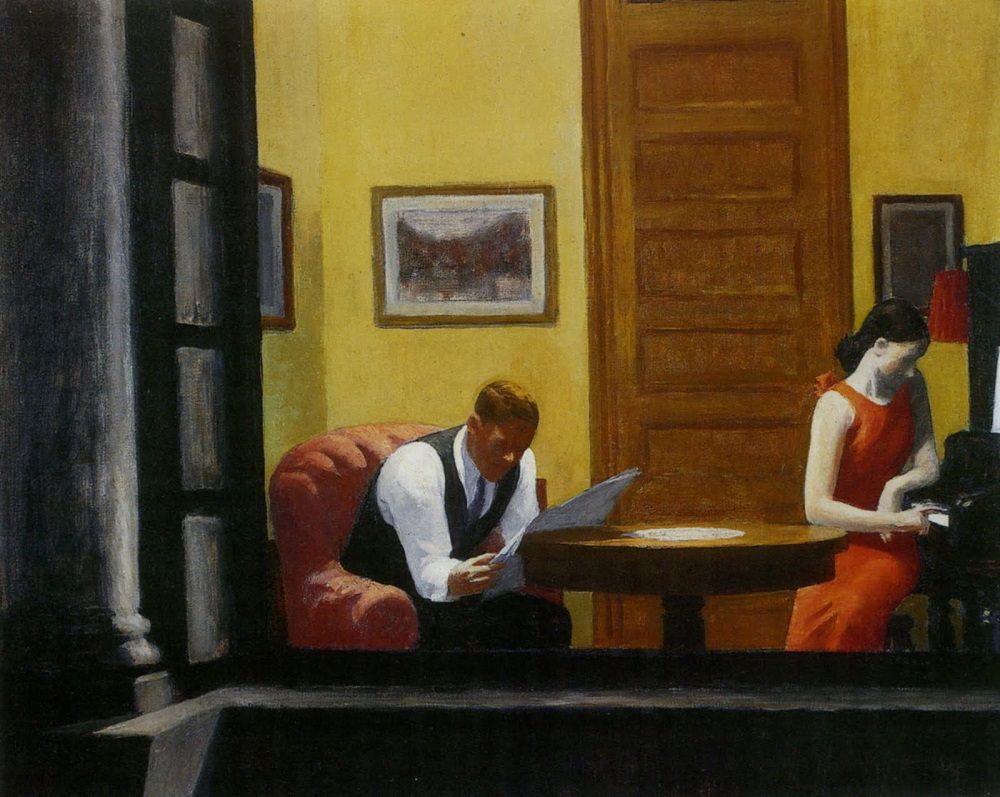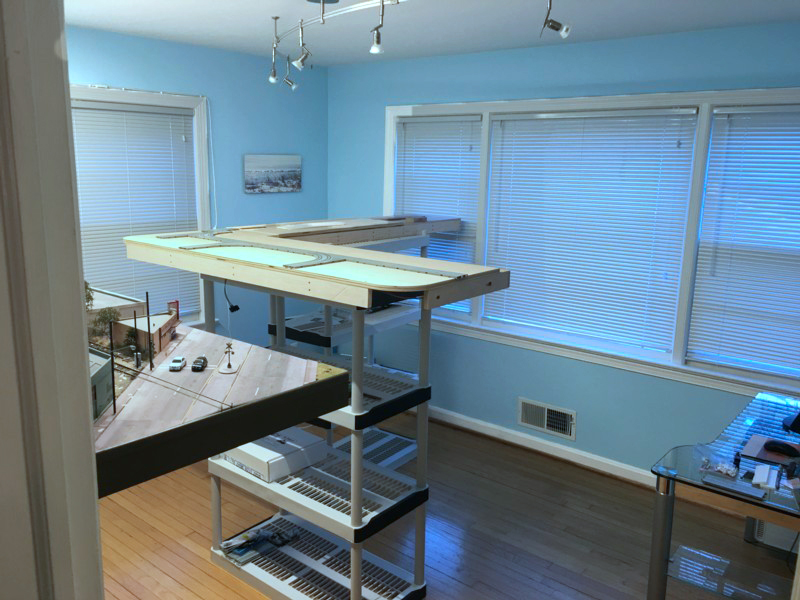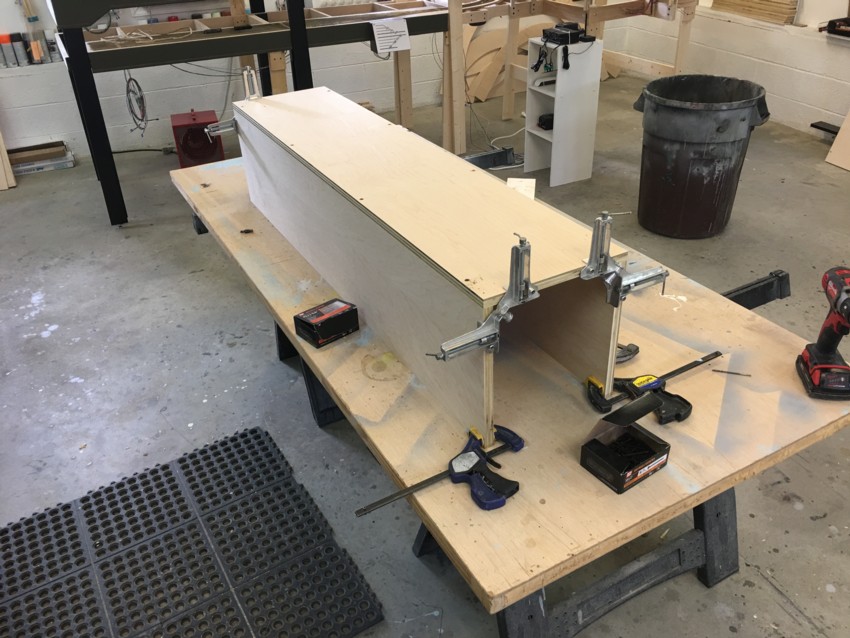I have an article in the April 2018 issue of RMC on modeling a LAJ Alco S-2.
Alco Article
- Post author By Lmind1
- Post date
- Categories In Los Angeles Junction Railway
This week I added the fascia to the Brooklyn Terminal layout. The curved corners are made from bendable 1/4″ MDF from Rockler, the rest being standard 1/4″ MDF. The trim strips are screen molding. To form the curves on the molding, I soaked the pieces in the tub and then carefully (very carefully) worked them around the curve clamping every several inches as I worked. Color is Behr paints “Wild Rice”. It’s hard to be patient during the bench work phase when you are chomping at the bit to get to the track and structures but I’m glad I took my time. With the bench work, pedestals, and fascia complete I can now move on to the “fun” part.

Model railroading is a hobby that allows it’s participants to dig in and participate as much or as little as they’d like. On one end of the spectrum would be the casual recreationalist. This is someone who wants to have a basic representational layout that he can unwind with now and then, perhaps entertain the grand kids, and limits his participation to a few hours here and there as the mood strikes. On the other end is the passionate modeler that is driven to produce the absolute best end result he can for himself. There’s a lot of real estate between the extremes and there is no right or wrong approach. If you get out of the hobby what you’re looking for, then it’s mission accomplished.
Moving from being highly skilled at copying a prototype rail subject to creating art entails an entirely new mental approach to the hobby, a different way of thinking. To get the necessary skills you need to go to places where that culture, approach, mindset, and drive exist. A place where over the centuries a culture of striving for quality is the cultural norm….the arts. Specifically, the visual arts of painting, sculpture, architecture, and film.
I’m talking about understanding why the masterpieces work visually, understanding the approach the artist took, understanding the basic concepts, and understanding what was trying to be accomplished. Gradually that frame of mind will begin to transfer and your modeling will improve. Listed below are some suggestions of areas and ways you can immerse yourself in the areas necessary to changing and broadening your thinking. I want to emphasize that the exercise isn’t one of learning new techniques. It’s a process in re-wiring your brain, changing the way you think, and how you approach things overall.
Painting
-Spend time in art museums. Don’t worry about being an art expert. Don’t get drawn into thinking you need to like something because it’s famous. Go, wander, take it all in, linger in front of the works that draw you in and walk past the ones that don’t.
-Read the biographies of the great artists of the ages: Vermeer, Rembrandt, Hopper, etc. After a few books you’ll start to notice some common themes, chief among them is a relentless pursuit of perfection. Yes, the masters were gifted but they also brought a work ethic and drive that was unmatched. They didn’t just roll out of bed in the morning, roll a brush around, and create a masterpiece.
-Take classes on understanding art, composition, and color theory. Note that I didn’t mention classes on how to paint, etc. I’m speaking of more conceptual studies.
Film
Change the way you watch film and high quality television. Spend more time watching lower budget independent films (as opposed to blockbuster action flicks) where the emphasis is more on quality than appealing to the masses. Watch how the scenes flow, the mood, the lighting, the pacing. When you see a film or series you like, Google interviews with the writers, creators and producers. The interviews are goldmines of information on what they were trying to accomplish and how they went about it. Some of my favorites are Sean Baker (Florida Project, Tangerine, Starlet), Michael Mann (Miami Vice) , David Simon/George Pelecanos (The Wire). Nic Pizzolato (True Detective).
Military Modeling
Military modelers approach their hobby entirely differently than railroaders do. It’s a different culture. To be blunt, the overall skill level is much higher than our hobby, the standards much higher, and they are much more driven to try new techniques. Almost everything they do can be applied to railroading.
Broadening the sources of where you get input, stepping outside the sandbox of model railroading, won’t yield instant results. None of this will come over night. However, if you embrace the idea, I think you’ll find that over the years you’ll see a hard to define but clear and noticeable upward tick in the quality of your work.
For a variety of reasons, the handling of the BT bench work support was critical to the look of the layout and overall gallery space. It deserved a lot of thought. Traditional legs, no matter how professionally assembled, would look spindly, spidery, and amateurish. A “curtain wall” under the layout would add visual mass and I’m trying to go in the other direction, minimize it’s size. In addition, decent looking curtains aren’t cheap and are dust magnets. The solution I ultimately decided on was to use three pedestals similar to what you’d see in sculpture gallery. They were painted semi-gloss black to minimize their size (flat black is also a dust magnet). No matter how much planning you do, how many preliminary sketches you make, you can never be sure if you’re idea will work or not until you see it executed in front of you. In this case, thankfully, the pillars have accomplished what I had hoped.

In addition to the satisfaction we get out of building and running our layouts, they can also provide enjoyment through the simple act of just looking at them. That is, taking them in and viewing them as we would a work of art. In that vein I’m setting up the front room of my home as a layout “art gallery” for lack of a better term. The goal is to create an environment where I can go to take the work in or allow visitors to see it. I’ve been trying to visualize how a professional sculpture gallery is set up and follow the same approach. If there is one characteristic that stands out it’s the lack of clutter. You have the sculptures (supported on pedestals) and that’s it, generally no other furniture. The first step was cleaning up all of the light and computer chord runs with zip ties and chord covers. All furniture was removed from the room with the exception of the computer desk. I was going to move the desk but the fact that it is entirely glass does wonders in terms of making it essentially invisible. The support of the layouts is important visually. The LAJ is on floating shelves. The Brooklyn Terminal, my present layout project, will be supported on three column like pedestals which will be painted semi-gloss black. I really wish I could have made the Brooklyn Layout one foot shorter on the long leg of the “L” but it simply wouldn’t work out operationally so I had to make a small concession visually. By luck, the room has two large windows which allow light to stream in for a pleasing effect in the afternoon hours.

